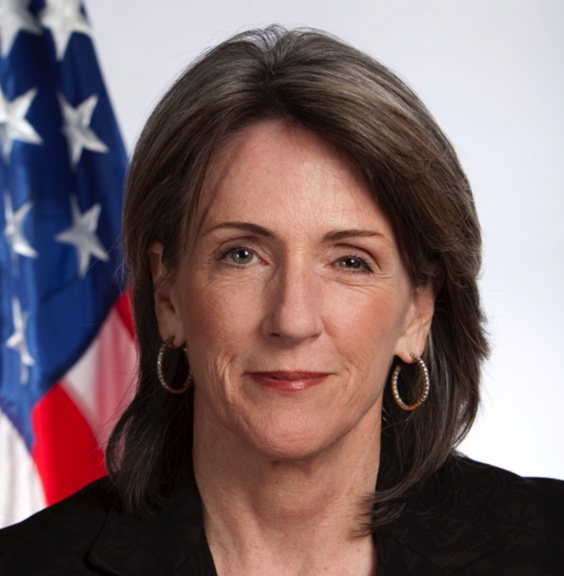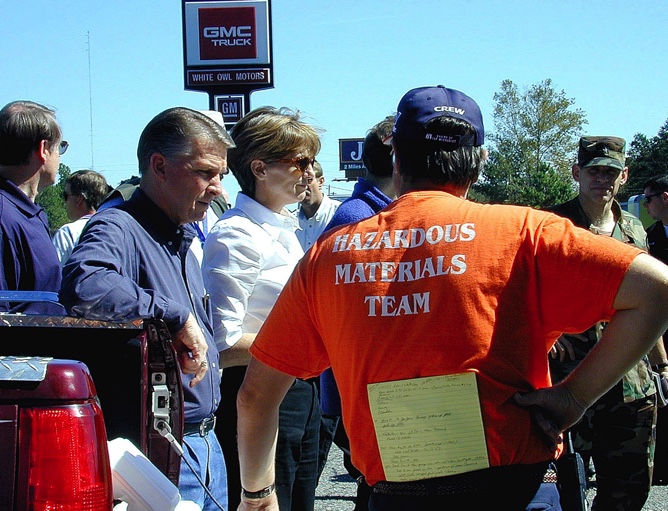Perhaps this is the best thing that can be said of an environmental leader: “…Browner was an in-your-face, if you will, environmental activist, and she could cut right through the fluff of any discussions and want to get to the core of what could be done for the environment.” Sweet!

That in-your-face conservationist is Carol Browner. She was born on December 16, 1955, on the edge of the Everglades. Her parents, both college professors, gave her a love of nature. She would often ride her bike to the swamp and hike there—she and nature were linked at the hip. But unlike many nature lovers, she wasn’t educated in biology or ecology, rather taking degrees in political science and law from the University of Miami.
Browner entered politics soon after leaving college, serving as general counsel to a Florida legislative committee. She moved on to DC, working for Citizen Action on grassroots efforts that often included environmental issues; a special interest was the effect of pollution on children. She became the chief environmental aide for a Florida senator and then for Tennessee Senator Al Goe (learn more about him here).
Browner returned to Florida to become Secretary of Environmental Regulation (1991-1993). There she initiated the ongoing restoration of the Florida Everglades—the largest environmental restoration project in U.S. history—including the dismantling of extensive drainage systems that had interrupted crucial flows of freshwater into the swamplands. She said of her approach in Florida, “We started looking broadly at ecosystem protection, which helped us get beyond some of the kinds of problems we’re seeing all over the country in a lot of the applications of environmental regulation.”
She seemed able to broker deals that moved environmental sustainability along while at the same time allowing economic development. For example, she convinced the state of Florida and the Walt Disney Corporation to allow Disney to develop 400 acres of wetlands the company owned in exchange for protecting nearly 8000 acres of other wetlands as a wildlife refuge—a form of mitigation that is commonplace today. A Disney executive said that “Browner was a ‘visionary with integrity,’ who could…reach accommodations without compromising Florida’s environmental review process.”
When Bill Clinton was elected president in 1993, his vice-president, Al Gore, convinced Clinton to name Browner as EPA Administrator. At 37 years of age, she became the 8th—and youngest—EPA leader. She remained in office for the full two terms of Clinton’s presidential tenure, leaving in 2001 as the longest serving EPA Administrator in history.

At EPA, Browner found both favor and disfavor with both the environmental and business communities (perhaps a reason for her longevity). She championed strengthening air and water quality standards, raising requirements to the most stringent thus far in the country’s history. At the same time, she recognized that the regulatory apparatus was too complex and re-organized EPA to make it more efficient and user-friendly. She believed in common sense as a touchstone for environmental protection.
At the end of her EPA appointment, she returned to the private sector. But President Barack Obama called her back to the White House to be his energy and climate-change “czar.” She served for two years. During that time, she was the principal face of the White House during the BP oil spill in April, 2000, earning kudos for her calm, professional and determined approach.
She is reminiscent of another great conservationist, Gro Harlem Brundtland (learn more about her here), the former Norwegian Prime Minister who coined the definition of sustainability universally used today. Both leaders were practical, but principled. Both made decisions based on logic rather than politics, sometimes angering business but sometimes also angering the environmental community. Both believe that we can have a sound economy along with a high-quality environment; in fact, they believe, both are necessary to achieve either. At her swearing-in ceremony in January, 1993, she said:
“I want my son to be able to grow up and enjoy the natural wonders of the United States in the same way that I have. I believe that we will now be able to make the investment in our economy that we so desperately need, yet preserve the air, land, and water.”
References:
Encyclopedia Britannica. Carol Browner, American Attorney and Politician. Available at: https://www.britannica.com/biography/Carol-Browner. Accessed December 2, 2018.
Environmental Protection Agency. 1999. Carol M. Browner. EPA History. Available at: https://web.archive.org/web/20081219170524/http://www.epa.gov:80/history/admin/agency/browner.htm. Accessed December 2, 2018.
Van Oss, Alex. 1993. New EPA Chief. Living on Earth, PRI’s Environmental News Magazine, January 8, 1993. Available at: http://www.loe.org/shows/segments.html?programID=93-P13-00002&segmentID=1. Accessed December 2, 2018.
